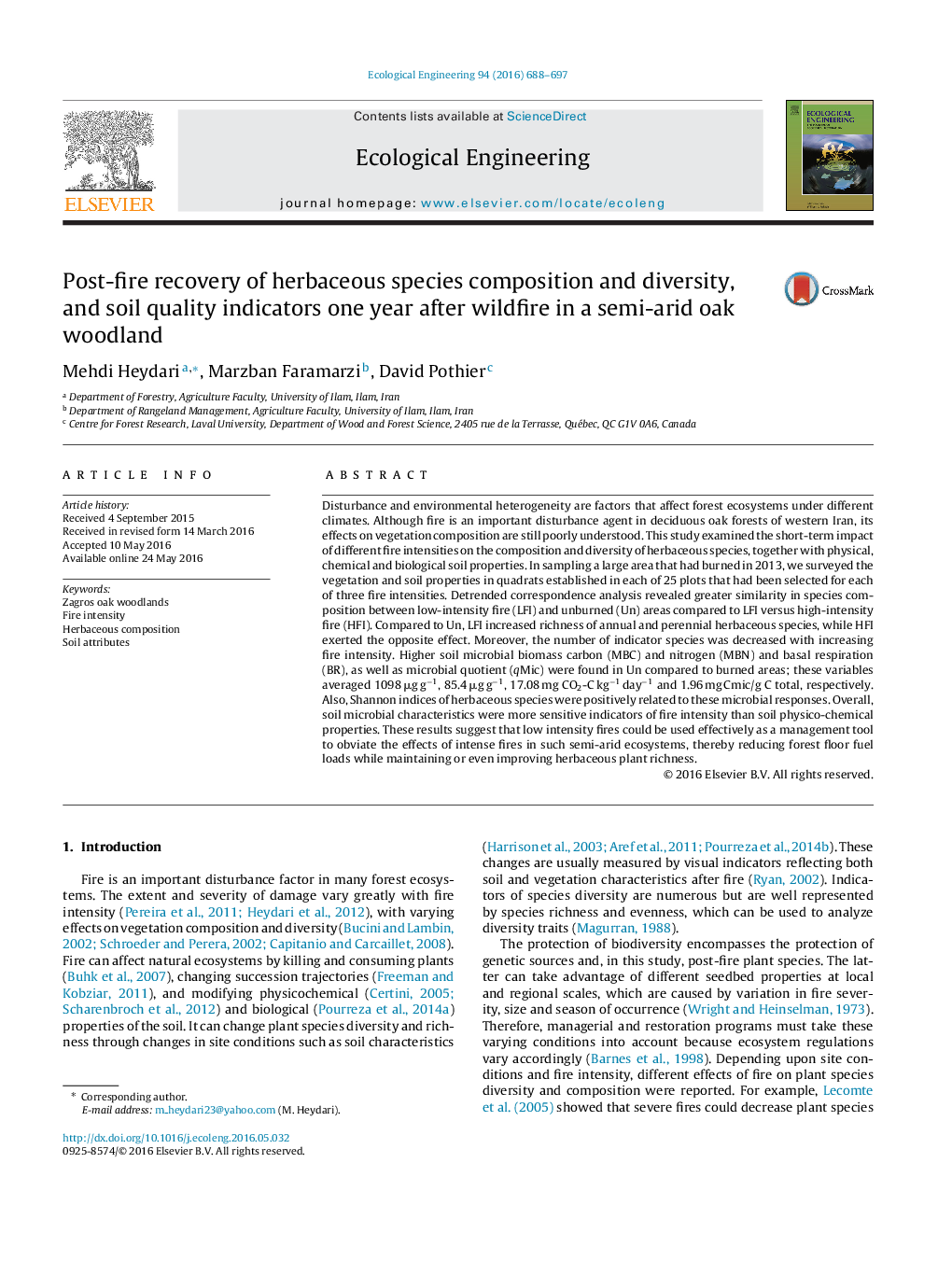| Article ID | Journal | Published Year | Pages | File Type |
|---|---|---|---|---|
| 4388598 | Ecological Engineering | 2016 | 10 Pages |
Disturbance and environmental heterogeneity are factors that affect forest ecosystems under different climates. Although fire is an important disturbance agent in deciduous oak forests of western Iran, its effects on vegetation composition are still poorly understood. This study examined the short-term impact of different fire intensities on the composition and diversity of herbaceous species, together with physical, chemical and biological soil properties. In sampling a large area that had burned in 2013, we surveyed the vegetation and soil properties in quadrats established in each of 25 plots that had been selected for each of three fire intensities. Detrended correspondence analysis revealed greater similarity in species composition between low-intensity fire (LFI) and unburned (Un) areas compared to LFI versus high-intensity fire (HFI). Compared to Un, LFI increased richness of annual and perennial herbaceous species, while HFI exerted the opposite effect. Moreover, the number of indicator species was decreased with increasing fire intensity. Higher soil microbial biomass carbon (MBC) and nitrogen (MBN) and basal respiration (BR), as well as microbial quotient (qMic) were found in Un compared to burned areas; these variables averaged 1098 μg g−1, 85.4 μg g−1, 17.08 mg CO2-C kg−1 day−1 and 1.96 mg Cmic/g C total, respectively. Also, Shannon indices of herbaceous species were positively related to these microbial responses. Overall, soil microbial characteristics were more sensitive indicators of fire intensity than soil physico-chemical properties. These results suggest that low intensity fires could be used effectively as a management tool to obviate the effects of intense fires in such semi-arid ecosystems, thereby reducing forest floor fuel loads while maintaining or even improving herbaceous plant richness.
